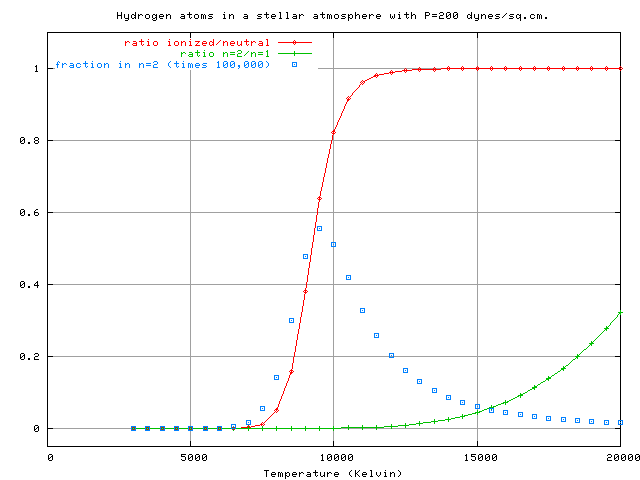Balmer absorption arises from atoms in the $n=2$ level. To have a significant occupation of the $n=2$ level it has to be quite hot, because of the 10.2 eV gap between the ground state and $n=2$. The fraction of atoms in the $n=2$ level just grows with temperature.
But at the same time, the ratio of hydrogen atoms to hydrogen ions decreases because more hydrogen is ionised as the temperature increases. The ionisation fraction depends on both temperature and pressure.
The peak number of atoms in the $n=2$ level is at around 10,000 K. At higher temperatures, too many atoms are ionised, at lower temperatures the occupation of the $n=2$ level is lower. This graph (from http://spiff.rit.edu/classes/phys440/lectures/saha/) might help.

As to why ionisation occurs at lower temperatures than significant occupation of the $n=2$ level, this is because if there are collisions and photons capable of putting any hydrogen atoms in the $n=2$ level then these are also easily capable of ionising an atom that is in the $n=2$ level. The peak temperature for Balmer absorption is telling us what the pressure is in the stellar atmosphere.

